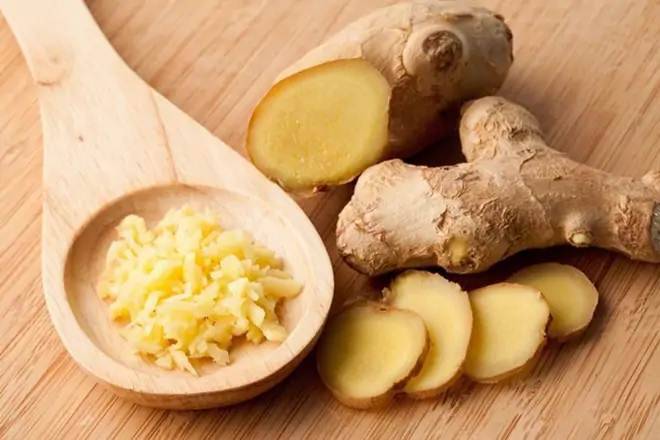November 26, 2025 | 16:33 GMT +7
November 26, 2025 | 16:33 GMT +7
Hotline: 0913.378.918
November 26, 2025 | 16:33 GMT +7
Hotline: 0913.378.918

Prices of ginger, turmeric and garlic are soaring globally due to increasing demand provoked by Covid-19 epidemic. Photo: TL.
According to the Vietnam Industry and Trade Information Center (VITIC), the world demand for ginger is constantly increasing. An important reason is that the Covid-19 epidemic has made consumers increase their use of this multi-use tuber. Besides, the demand comes from the hospitality industry in many countries around the world as it gradually reopens post-pandemic.
Although scientists have rejected series of information hyping ginger's use as a "superfood" with the ability to fight against the virus, its positive effects are widely recognized in the fight against colds and flu among others.
An increasing number of consumers who are conscious about health have stirred up an already vibrant global spice market, even more strongly during the ongoing Covid-19 pandemic. As a result, more investors paying attention and interest in this sector.
Due to the high demand for ginger, the price of ginger around the world increased sharply. The price of ginger exported from China to Europe is currently around USD 2,200 - 2,300 USD per ton, about 30% higher year on year. The high price of Chinese ginger is also caused by the increase in transportation costs and the climb in the price of input materials.
As being used for treating pain and inflammation, the demand and price of turmeric have also increased sharply due to the Covid-19 epidemic.
The price of turmeric in India has continuously increased sharply since the beginning of 2021, from about 5,000-6,000 rupees per quintal at the beginning of the year to 7,000-7,500 rupees per quintal in February and March 2021, to 9,522 rupees ($130) per quintal at the end of May 2021, the highest in the past 5 years.
According to the Indian Ministry of Commerce, India's turmeric exports increased by 36% in 2020 to a record 181,664 tons and are expected to continue their upward trend in 2021.
Thanks to several ingredients that are believed to help the body fight the virus, the demand for garlic has increased sharply due to the Covid-19 epidemic.
Currently, the price of Chinese garlic is at 5.3 yuan (USD 0.83) per kg, the highest in at least 6 years, and is expected to continue to increase further, possibly back to 6 yuan (0. 94 USD) per kg or over this summer. That's not to mention strong buying demand for raw garlic for processing or cutting, which could push the price up to 7 yuan (USD1.1) per kg.
The FOB price of Chinese garlic exported to Europe is currently at USD 1,100 - 1,200 per ton, an increase of about 40% over the same period last year.
/2025/11/24/3616-2-141832_513.jpg)
(VAN) FSC certification has helped increase the value of thousands of hectares of planted forest timber under the management of the Xuan Loc Protection Forest Management Board, particularly in terms of selling prices.

(VAN) More than 100 shoppers queued for a chance to get a kilo or so of Japanese rice for 500 yen ($3.32) by heaping as much grain into a small wooden box as possible.

(VAN) Benchmark international prices of milled declined in October as harvests started or improved in some parts of the globe.

(VAN) Show cause orders will be issued to retailers who sell imported rice at prices exceeding the maximum suggested retail price (MSRP) of P43 per kilo, Philippines Agriculture Secretary said in a statement on Thursday.

(VAN) Coffee prices on October 20, 2025, remained stable domestically, trading at 113,500–114,500 VND/kg. Similarly, global coffee prices also moved sideways.

(VAN) By October, Vietnam’s coffee exports had surpassed USD 7 billion for the first time and will exceed USD 8 billion within this year.

(VAN) Illinois rancher says Texas, Oklahoma, Kansas lost grass and forage, forcing massive cattle liquidation.